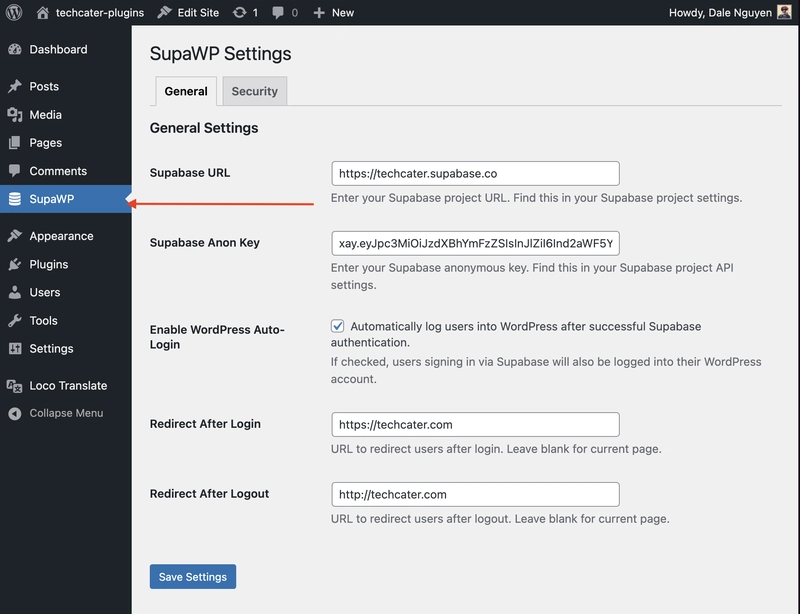A Guide to Freezing Practically Any Food
You'd be surprised how much money you can save by tossing food in the freezer.

We may earn a commission from links on this page.
Sure, the refrigerator can keep food fresher longer, but for serious life extension, the freezer is where you should focus your attention. Preserving food isn’t just better for reducing food waste, it’s crucial for staying on budget, especially as grocery prices hit new highs. Stop the pattern of bulk buying and bulk tossing spoiled food, and get comfortable with freezing more of your grocery haul. Here are the best ways to pack your freezer, the best things to freeze, and how to do it.
Organized freezers fit more and stay cold
Before we dive into specific foods, it’s important to set a standard for freezer organization. Keeping a tidy freezer (and fridge for that matter) will keep you from having a headache finding lost foods, allow you to fit more in the space, and ensure you’re eating older foods first. Freeze sauces, broths, and other liquids flat in freezer safe zip-top bags, and don’t forget to label them. (You might swear to yourself in the moment that there's no way you'll forget when you put that chili in the freezer, but then an unknown number of months passes and suddenly you're not so sure whether that chili is from June or September.) Once your liquids are frozen flat, then you can stack them like books on a shelf. Read here for more detailed tips on portioning sauces in the freezer.
If you don’t like the idea of freezing in plastic freezer bags (keep in mind that many can be washed and reused up to 10 times) then buy a set of freezer-safe storage containers that can be stacked. The goal is to fit as much as possible in your freezer while still having access to all of the items. You don’t want things getting lost in the back. As an added benefit, more frozen food in the ice box keeps the temperature steady, and your appliance won’t need to draw as much energy. Less money spent on energy is another chicken cutlet in the freezer.
Finally, consider investing in a chest freezer. You’ll be able to freeze larger, irregularly shaped items, like a rack of lamb or a whole turkey, easier in one of these. Plus the storage down at your feet rather than up high makes it a better place for heavy items. My current Brooklyn apartment doesn’t have the space, but you better believe that the first thing I’m buying when I do have more space is a chest freezer.
Carbs
Let’s start with the best thing to freeze: carbs. Breads, cake, choux puffs, cookies, English muffins—they are all freezer champions. I say this because they freeze quickly, freeze for a long time, and revive like nothing ever happened. They’re the best example of what a great time capsule the freezer can be.
Keep any bready item in the freezer. The carbs I always freeze are sliced bread, loaves of bread, pre-split English muffins (it’s less annoying later), pancakes, waffles, cooked rice, cakes, frostings, cookies (as dough or post-bake), burger buns, bagels, and biscuits. Some of these can be frozen in their raw form, but you might run into leavening problems if you try baking them after they’ve been frozen. If you haven’t tried to do it before, I recommend baking the bread, cookies, or biscuits first, cooling them completely and then freezing them on a baking tray. After they’re hard and frozen, consolidate the item into a container or freezer bag.
Revive breads in a 350°F oven for five to 10 minutes, or in the toaster oven for pancakes and waffles. I’ve revived breads after five months of freezer time and they’ve suffered no degradation in flavor or texture.
Meats and other proteins
Meats are easy to freeze both raw and cooked. The only thing you really have to be careful of is freezer burn. I recommend portioning your meats when you bring them home from the grocery store. You can cut chicken into slices or form ground meat into patties while it’s thawed, then wrap them securely in freezer-friendly containers or bags to freeze. I’ll sometimes reuse plastic grocery bags just to double bag them and hopefully prevent moisture loss. Other proteins I like to freeze are shrimp and tofu.
To use frozen proteins, put the portion size of your choice into the fridge overnight. If you’re using the meat in a soup or sauce, you might be able to just toss it into the hot pot of liquid to thaw and cook more quickly. According to this USDA freezing chart, frozen foods stay safe indefinitely—it’s really quality and texture that you’re looking out for. Here are their guidelines on how long different proteins can be frozen before texture or quality starts to suffer.
Cheeses

Frozen cheese is a lifesaver when you need to make a boring meal a tad more appealing. Shredded and low-moisture cheeses freeze well. Check here for a more complete guide on great freezing cheeses.
You can easily freeze a block of cheese, like low-moisture mozzarella, cheddar, or swiss, straight in its plastic packaging. When you need to thaw it, leave it in the fridge overnight and it should be ready to go the next day.
If you know that you’ll be using it for particular uses, like pizza toppings or lasagna layers, slice or shred it before freezing and keep it in freezer-safe containers. Then the container can essentially live in the freezer. You can just reach into the bag and pluck out exactly what you need, leaving the rest to stay frozen until next time.
Fruits and vegetables
Fruits, vegetables, and fruits we call vegetables are all freezable. It’s really the thawing that can cause trouble for some produce, but more on that later. When you’re preparing to freeze fruit, slice it into bite sized pieces first, if needed. For example, berries don’t need to be prepped, but pineapple does. Peel fruits and veggies that you’d normally eat peeled—probably not necessary for bell peppers, but you’d do this for bananas. They should be peeled first and then cut into smaller pieces for using later. I’ll usually peel ginger root and julienne it because that’s how I’ll normally use it in soups and curries.
Lay the pieces out onto a parchment lined baking sheet in a single layer and put it in the freezer for an hour or two until solid. Then consolidate the fruit into a freezer-safe container. When you’re ready to use the produce, drop it straight into the cooking dish—there’s no need to thaw it. In fact, thawing the ingredient first will probably cause it to be mushy. That’s why fruits and veggies that have been frozen are often great for cooking—they transfer all of their flavor beautifully and it doesn’t matter if their cell structure has gotten a little busted up. Try using them in stews, soups, muffins, pies, or smoothies.
Milks and liquids
As I mentioned earlier, freezing liquids in flat planks can help you stack them and conserve space, as opposed to finding spaces for blocks of liquid. However, it’s really a matter of preference. I wasn’t privy to the world of freezing milks until recently when I learned that I could freeze and thaw coconut milk. It turns out you can freeze cow milk equally as well.
This is a huge boon, since dairy milks tend to spoil rather quickly, but buying a whole gallon is usually more cost effective than the smaller sizes. Now you can buy the bigger size, pour half of it into a freezer-safe container and pop it into the freezer. Use the other half at your normal pace, and when you’re ready, thaw the other portion.
Thaw frozen milk in the fridge overnight and give it a shake to smooth it out. If you’re in a rush, you can put the icy milk block into a pot on the stove and warm it up. Then return it to the fridge in a container to use in cereal, tea, and coffee over the next five days.
Entire cooked meals
Take it from the freezer aisle of your grocery store: a lot of completely cooked meals can be frozen. While you could meal prep for the freezer (my mom will make three lasagnas just to freeze them for us kids later), I use this as an easy way to save leftovers from the garbage can. If I make soup, a huge batch of chili, a casserole, or a stir fry and find that I have way more left over than I expected, then I’ll portion it out into containers or freezer bags and freeze it. This is especially helpful for when you’re leaving for vacation or you have dinner plans for the next four nights.
Depending on the meal you’ve frozen, the best way to reheat it is to use the original cooking method. If it’s soup, throw the frozen blocks into a pot, cover it with a lid and heat it over low heat to revive it. If it’s a casserole, gently reheat it in the oven covered with foil so it doesn’t dry out. A stir fry or sautéed meal will reheat best in a lightly-oiled large pan. Start it off on low heat with a lid so the humidity can help thaw the food. After you can break up the pieces easily then you can keep the lid off and bump up the heat to get a nice fry going, and evaporate any excess moisture.
Tough to freeze items
There are some items that just don’t fare well in the freezer. Whole eggs with their shells on are not recommended for freezing because their shells can crack as the interior expands; this may allow bacteria to potentially contaminate the inside. However, you can crack them and freeze them free from their shells.
Watery fruits, vegetables, and tender herbs, like lettuce, cilantro, melons, and cucumbers freeze well but lose their structural integrity after thawing. These can be frozen, and as long as your intentions are to use them in something blended (like a soup or smoothie) then you won’t be disappointed. There’s no need to thaw them, just dump them straight in the soup, sauce, or blender.










































































